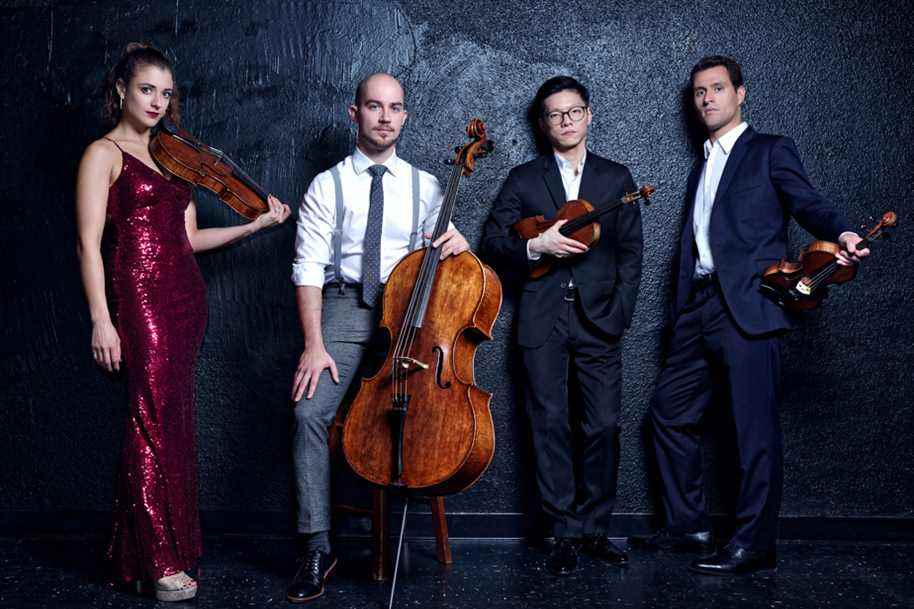After the Jerusalem and Cremona quartets, it was the turn of the young Dover Quartet to perform in Montreal. The least we can say with the latter is that the value has not waited for the number of years.
Formed in 2008 at the prestigious Curtis Institute in Philadelphia – where it is now in residence together – the Dover Quartet (name inspired by the work Dover Beach de Barber) began to gain attention with his all-out victory at the Banff International String Quartet Competition in 2013.
The program he had prepared for the audience in the Bourgie Hall was a priori austere: a youth score by Zemlinsky (the Quartet no 1 in a major, opus 4) – which has especially gone down in history as a professor of Schoenberg -, a contemporary quartet and a work by Brahms (the Quartet no 2 in a minor, opus 51). The latter may well be one of the greatest composers of chamber music, his string quartets are not among his most accessible or heard works.
But the Dovers could play anything to us and we would ask for more. The quartets that play with such technical quality these days have to be counted on the fingers of one hand, let’s say two to be generous. They go through a demanding program of an hour and a half without a break, without even going for a sip of water. There is no sign of fatigue, even in the robust Brahmsian score at the end. From start to finish, everything is absolutely spotless.

PHOTO ROYCOY, PROVIDED BY LA SALLE BOURGIE
Camden Shaw, Joel Link, Milena Pajaro-van de Stadt and Bryan Lee of the Dover Quartet
Concert debuts are often difficult for chamber music ensembles, which sometimes take several minutes to find their feet. That’s not the case here. Everything is held together from the first bars.
What is also striking is the quality of Joel Link’s first violin. His playing is like a beam of light that guides the quartet throughout the recital. The quality of the vibrato, the strength of the leadership, everything impresses in the young American.
His colleagues are far from being outdone. You should have seen violist Milena Pajaro-van de Stadt and cellist Camden Shaw string together a difficult line in unison in the second movement of Zemlinsky’s quartet. You would have thought you heard a single instrument!
These individual qualities combined with listening to every moment give a shimmering, almost orchestral sound. This can be heard in particular in the Brahms, more particularly in the first movement, where the rather moderate tempo adopted by the ensemble allows the instruments to sing as well as possible. The last two chords of the same movement are so loud, powerful, that we refrain from applauding.
In the slow movement of Zemlinsky’s quartet, the musicians fully savor the twilight harmonies, emphasizing the shadows and lights of the score. Ditto in the previous movement.
A tiny reservation: the trio of Brahms’ third movement was perhaps played a little too much in the string, not enough “leggiero” as requested by the composer.
The contemporary piece, the Quartet no 2 by Cuban-American composer Tania León, was delivered with the same technical perfection and expressive commitment. The three-movement score alternates between consonant and dissonant passages, exploring the many possible modes of play – ostinatos in pizzicato of the cello evoking the guitar, harmonics and pizzicatos à la Bartók (the string slams on the fingerboard – and cultivating a profusion of tight imitations. and the tiling effects (the musicians pass the baton on for a melodic line or a chord).
Big, beautiful quartet.
